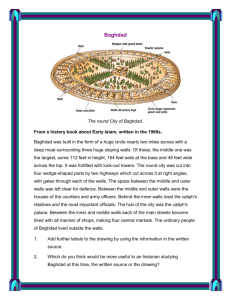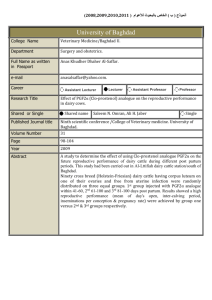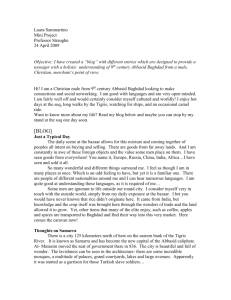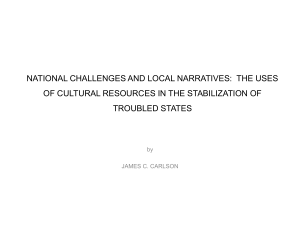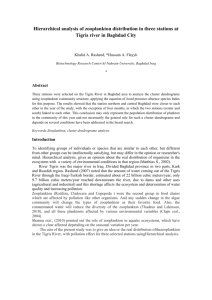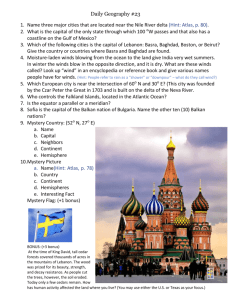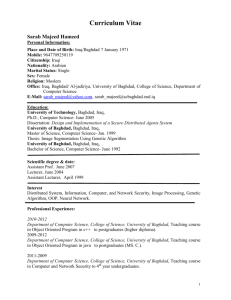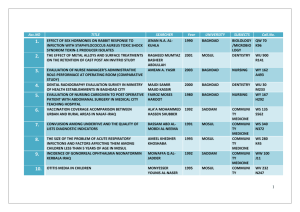Traveler`s Description of the capital city of Baghdad
advertisement
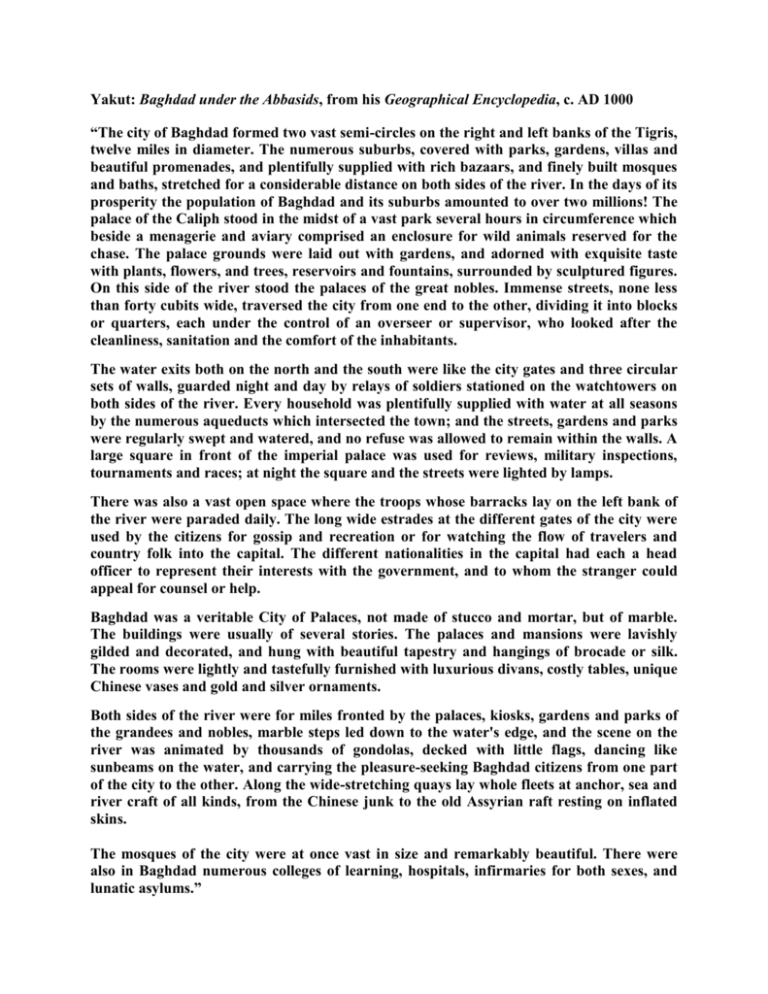
Yakut: Baghdad under the Abbasids, from his Geographical Encyclopedia, c. AD 1000 “The city of Baghdad formed two vast semi-circles on the right and left banks of the Tigris, twelve miles in diameter. The numerous suburbs, covered with parks, gardens, villas and beautiful promenades, and plentifully supplied with rich bazaars, and finely built mosques and baths, stretched for a considerable distance on both sides of the river. In the days of its prosperity the population of Baghdad and its suburbs amounted to over two millions! The palace of the Caliph stood in the midst of a vast park several hours in circumference which beside a menagerie and aviary comprised an enclosure for wild animals reserved for the chase. The palace grounds were laid out with gardens, and adorned with exquisite taste with plants, flowers, and trees, reservoirs and fountains, surrounded by sculptured figures. On this side of the river stood the palaces of the great nobles. Immense streets, none less than forty cubits wide, traversed the city from one end to the other, dividing it into blocks or quarters, each under the control of an overseer or supervisor, who looked after the cleanliness, sanitation and the comfort of the inhabitants. The water exits both on the north and the south were like the city gates and three circular sets of walls, guarded night and day by relays of soldiers stationed on the watchtowers on both sides of the river. Every household was plentifully supplied with water at all seasons by the numerous aqueducts which intersected the town; and the streets, gardens and parks were regularly swept and watered, and no refuse was allowed to remain within the walls. A large square in front of the imperial palace was used for reviews, military inspections, tournaments and races; at night the square and the streets were lighted by lamps. There was also a vast open space where the troops whose barracks lay on the left bank of the river were paraded daily. The long wide estrades at the different gates of the city were used by the citizens for gossip and recreation or for watching the flow of travelers and country folk into the capital. The different nationalities in the capital had each a head officer to represent their interests with the government, and to whom the stranger could appeal for counsel or help. Baghdad was a veritable City of Palaces, not made of stucco and mortar, but of marble. The buildings were usually of several stories. The palaces and mansions were lavishly gilded and decorated, and hung with beautiful tapestry and hangings of brocade or silk. The rooms were lightly and tastefully furnished with luxurious divans, costly tables, unique Chinese vases and gold and silver ornaments. Both sides of the river were for miles fronted by the palaces, kiosks, gardens and parks of the grandees and nobles, marble steps led down to the water's edge, and the scene on the river was animated by thousands of gondolas, decked with little flags, dancing like sunbeams on the water, and carrying the pleasure-seeking Baghdad citizens from one part of the city to the other. Along the wide-stretching quays lay whole fleets at anchor, sea and river craft of all kinds, from the Chinese junk to the old Assyrian raft resting on inflated skins. The mosques of the city were at once vast in size and remarkably beautiful. There were also in Baghdad numerous colleges of learning, hospitals, infirmaries for both sexes, and lunatic asylums.” NAME: __________________________ PERIOD: _______ DATE: ____________________ 1. Baghdad was A. B. C. D. E. A center for trade. Haphazardly designed. A dangerous city to visit, where crime and sin abounded. Solely the Arab’s administrative capital and a military compound. A largely-Christian city. 2. One opinion about Baghdad mentioned by Yakut was A. B. C. D. E. Its population numbered nearly two million. There were numerous colleges and centers of learning in the city. The city was divided into districts for local administration. The palaces’ grounds were adorned with exquisite taste. Water was important in the urban design of the city. 3. Yakut’s description of Baghdad leads you to believe that A. B. C. D. E. Baghdad was surrounded by three circular walls. The citizens of Baghdad loved the pleasures and beautiful things. The Abbasids were weak rulers. The city was architecturally uninteresting. The city was an old urban center predating Islamic and Abbassid times. 4. A historian may conclude from the reading excerpt that A. B. C. D. E. Cleanliness was not all that important to the Abbasids. Baghdad was the old Babylon of Biblical fame. Baghdad has an extremely dry and dusty climate. Most inhabitants of Baghdad were soldiers. The city was a well-designed city, laid out with the goal of defense and trade. 5. Based on the last paragraph which statement is a factual deduction? A. B. C. D. E. Baghdad was a prominent Muslim city and intellectual center. Most Baghdad citizens were crazy. There was much disease in Baghdad. The Abbasid caliphs treated men and women equally. The city was a center for international trade.

